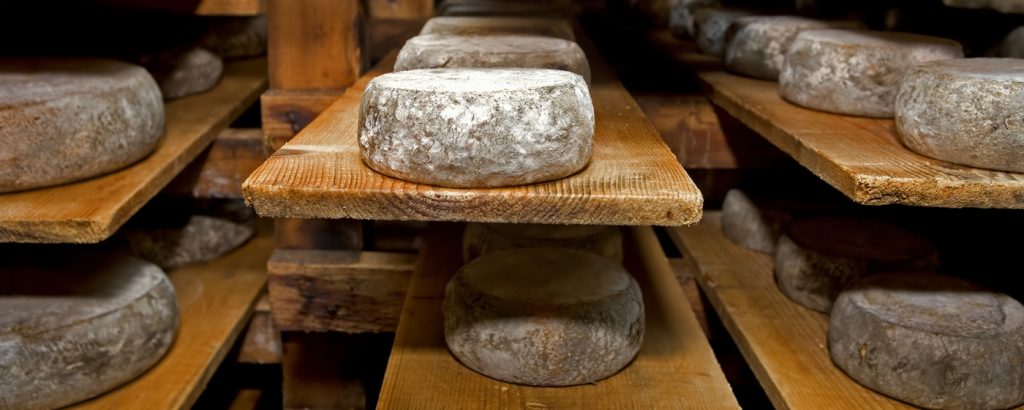What is Fermentation
Fermentation is the transformation of food by various bacteria, fungi, and the enzymes they produce.
People harness this transformative power in order to produce alcohol, to preserve food, and to make it more digestible, less toxic, and more delicious. By some estimates, as much as one-third of all food eaten by human beings worldwide is fermented .Fermented food production, taken as a whole, constitutes one of the world’s largest industries.
Fermentation involves creating a living ecosystem with several different organisms working in unison to thrive. Different species of bacteria are used in the process and the types of bacteria that form determine whether the outcome is successful.
The bacteria used in fermentation contain different properties, survive on different types of nutrition, and compete for the nutrients available. The fermented foods will look, feel, and taste a certain way based on the properties of the bacteria.
Fermentation and Global perspective
The art of fermentation has been core to civilizations across the world for millennia. Traditional fermented foods have formed a stable component of these diverse diets. Worldwide, people enjoy beers and wines, breads, cheeses, and vinegar ,all the products of fermentation.
Mankind have been harnessing this natural process to ferment traditional foods for thousands of years. The Greeks deemed this ancient process “alchemy,” to capture the magical transformations that occurred during fermentation. The earliest form of lactic acid fermentation is believed to have been milk fermented into yogurt, kefir, cheeses, and buttermilk.
Many cultures have a distinctive fermented food that’s a fundamental part of their diets:
- Sauerkraut in Central Europe,
- kimchi in Korea, miso in Japan,
- Olives and cured meats in the Mediterranean countries
- Yogurt and chutney in India,
- Pickled herring in Scandinavia, V
- Egemite in Australia,
- Tarama (fermented roe) in the Far Eastern countries, and
- Sourdough bread in the United States.
Process of Fermentation
Fermentation is anaerobic metabolism, the production of energy from nutrients without oxygen. Fermentation happens when microorganisms (natural bacteria and some yeasts) feed on the sugar and starch in food, converting them into lactic acid in a process known as lactofermentation. This breakdown produces ethanol, acids, gases, and other precursor molecules.
The breakdown products are used as intermediate compounds in a chain of enzymatic reactions, from which a more stable or definitive product is formed. There are several types of fermentation but lacto-fermentation provides the most health benefits from a biochemical perspective.
In a broader sense, lacto-fermentation creates beneficial bacteria, enzymes, vitamins, and various strains of probiotics (live beneficial microorganisms). An added benefit of fermentation is increased shelf life of food.
Interestingly, fermentation doesn’t just encompass one basic process—it’s nearly as diverse as the range of foods it produces.
The Benefits of Fermenting Foods
1.Healthy Body :The number of studies showing the health benefits of eating a diet rich in fermented foods is growing. In particular, a 2006 study done by the Japanese Society of Allergology showed that fermented foods can lessen or reduce allergies as well as plaque in the mouth, which results in fewer cavities and healthier gums. The study also showed that many people even lose weight more easily when they include fermented foods in their diets.
2.Digestion :Fermented foods improve digestion by supplying probiotic bacteria and restoring balance in digestive tract. This is where the foods are digested and all the nutrients are absorbed. Bacterial balance in the digestive system is important for many reasons. When bad bacteria overcrowd gut, that balance gets disturbed.
Foodborne illness, commonly referred to as food poisoning, is one possibility. But other problems, including headaches, diarrhea, allergies, and even disease can result. Some bad habits including consumption of unhealthy, processed foods, stress, and even insufficient sleep can throw bacterial balance into a tailspin. Including fermented foods in diet regularly is a good habit that can re-establish a healthy bacterial balance.
3.Immune System support Nearly 100 trillion bacteria populate our digestive tract. Our digestive tract is where all the hard work happens to help us stay well. When we are fighting disease or illness, the bacterial balance in our gut is important to our immunity. In fact, the largest organ in our immune system is our gut, this is responsible for almost half of our immune response.
Research shows that our gut is strongly connected to our immune system. The neurotransmitters in our gut communicate with our immune cells, activating and strengthening our immune system. For example, inflammation is thought to be connected to diseases such as arthritis, metabolic syndrome, and heart disease. The probiotic bacteria in fermented foods creates a healthful balance in our digestive tract, which can help the neurotransmitters connect with immune cells and impact healthy immunity and resistance to disease and illness
Different type of fermentations
Not only does fermentation contribute to a diverse diet, but it also preserves, enriches, and detoxifies foods. It is the life force—that is, live bacteria, yeasts, and molds—behind fermented foods that confers its beneficial impact on your health.
The sheer number and variety of these microorganisms is what creates the great diversity of fermented foods, which can generally be broken down into seven categories:
1. Cultured vegetable protein.
These usually consist of legumes, such as soybeans, which are used to produce tempeh. An Indonesian staple dating back two thousand years. Tempeh is made from cooked, hulled, fermented soybeans bound together with a mold that makes soy easier to digest. The result is a pressed cake. This pressed cake used as a meat substitute, that can be sliced, grated, chopped, or skewer for the grill.
2. High-salt-content, meat-Flavoured fermentation pastes.
These usually consist of salty and savoury meat-Flavoured, protein-bound grains and legumes. Generally used are soybeans, that are soaked, mashed, cooked, and left to ferment to make pastas and sauces.
Most of these fermentations originated in Asian countries. Examples include soy sauce, miso, shoyu, Vietnamese mam, Indonesian trassi, and Malaysian belacha.
Vietnamese Mam and Chinese Miso example of High salt fermented foods
3. Alcohol fermentations.
These appear in biblical references as fermented wine.
In this naturally occurring biological process, sugars, such as glucose, fructose, and sucrose, are converted into cellular energy by yeasts .This happen when placed in an environment absent of oxygen, whereby the microorganisms produce ethanol (alcohol) and carbon dioxide as their metabolic waste products.
We derive wine by fermenting the natural sugars found in grapes. Rum is produced by fermenting sugarcane, and whiskey, vodka, and beers are all produced by fermenting grain.
4.Vinegar fermentation.
This type of fermentation process results when expose alcohol (ethanol) to oxygen. Vinegar is produced by a group of bacteria known as Acetobacter, which convert the alcohol into acetic acid, or vinegar. You may have experienced this type of fermentation if you’ve ever left a bottle of wine open for too long. Examples of acetic acid fermentation include apple cider vinegar, wine vinegars, coconut water vinegar, and African palm vinegar.
5.Alkaline-fermented foods.
These are less common foods made from various raw ingredients that are predominantly consumed in Southeast Asia and African countries. One such example is Japanese natto, made from cooked soybeans, or ugba from African oil beans.
The proteins in the raw materials are broken down into their component amino acid and peptide parts, releasing ammonia and increasing the pH of the product, which results in the strong smell associated with these fermentations.
6. Leavened breads.
Fermented breads are made from fermenting grains, such as wheat or rye, which employ naturally occurring yeasts and Lactobacilli to raise the dough and create sourdough.
Because the Lactobacilli produce lactic acid, sourdoughs produce a mildly sour taste, unlike breads made with baker’s yeast. The fermented mix of grain and water, called a “sourdough starter,” can be saved and used to start another batch of dough. The history of making leavened breads dates back to ancient times, with records as far back as six thousand years ago.
7.Lactic acid fermentation.
This fermentation occurs when bacteria convert sugars present in the food into cellular energy and lactate, or lactic acid. Lactic acid is a natural preservative that inhibits putrefying bacteria, and the process is one of the most significant forms of fermentation in the food industry. Examples of vegetable lactic acid fermentations include sauerkraut, cucumber pickles, olives, kimchi, kefir, yogurt, soymilk, buttermilk, cheeses, and tofu.
Raw milk, which is unpasteurized, sours quite rapidly due to the natural fermentation conducted by lactic acid bacteria.The bacteria convert lactose (milk sugar) into lactic acid, which serves as a preservative. Lactic acid is a natural antibiotic that keeps spoiling organisms away from the naturally preserved foods that contain it. Yet the benefits of lacto-fermentation do not stop at preservation. Lacto-fermentation creates an incredible array of flavours and textures.
Lactobacilli—the most important lactic acid–producing bacteria proliferate during the process of fermentation, making fermented foods so healthful. Because Lactobacilli increase the digestibility of vegetables by providing their own natural enzymes, our bodies do not have to completely rely on the digestive system to metabolize foods.
These bacteria also increase the natural vitamin content of vegetables and produce antibiotics and cancer-fighting agents. Lactic acid also facilitates the proliferation of healthy gastrointestinal tract flora that are so integral to our well-being.

